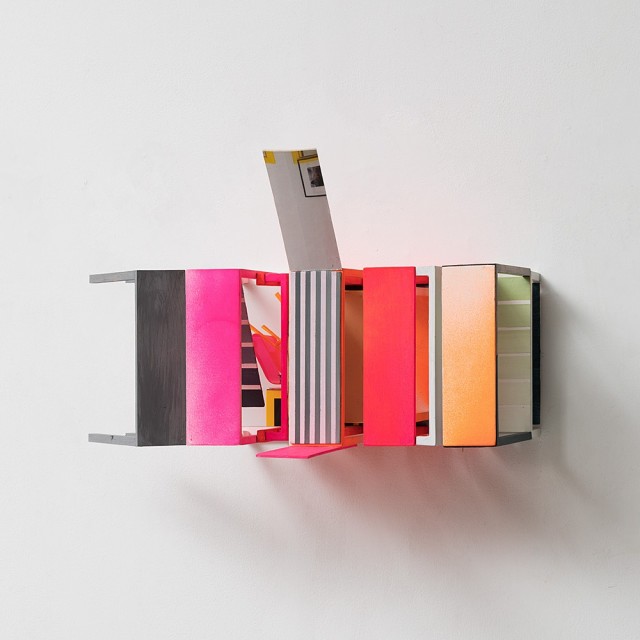Nahum Tevet (b. 1946, Israel) was the most extreme of the Israeli Minimalists in the mid-1970s. He sees creativity as a process based on a system of abstentions and reductions; the aim of the creative process being to impart the essence of the plastic medium. However, at least two qualities in his work break the rules of Minimalism: the lyrical quality of his colour and line, and the frequent resemblance of his works to real objects, like tables or beds.
Nahum Tevet launched his career in the early 1970s with work that was quite resolute, even within the context of Post-Minimalism. Robert Rauschenberg acquired several of Tevet’s works on glass in 1974. Under the impulse of the renowned historian and philosopher of art Thierry de Duve, these works on glass have been shown in Hunter College in New York (US), Muzeum Sztuki in Łódź (Poland), and Museum Villa Stuck in München (Germany).
From the 1970s onwards, Tevet’s artistic project examines and deconstructs the fundamental concepts of "painting" and its' role within specific spaces, while critically referring to minimalism and conceptual art. These ideas developed to vast, multi-limbed and intricate installations involving the viewer in a rich visual and conceptual experience. By the mid 1990s the scale of Tevet’s work began to grow dramatically, culminating in what may be the artist’s masterpiece, Seven Walks, a sprawling installation that Tevet worked on from 1997 to 2004 which was recently on view at Museum Villa Stuck, Munich.
Nahum Tevet’s poetics is based upon the connections between painting, sculpture and architecture. The ‘building blocks’ that comprise Tevet’s formal vocabulary, for both his small wall works and the large, sprawling sculptural installations are never ‘ready mades’. They are simple, almost archetypal forms: the chair, the table, the box, the boat, the book, etc. As viewers, confronted with a nested configuration of these ‘building blocks’ in different colors and measures, some right-side up, others resting on their side, some upside-down, we are required to constantly recalibrate and puzzle out an elusive ‘correct’ point of view. What exactly are we looking at? From where? What is up and what is down? What is foreground or background? What is large and what is small? Near or far? As viewers, we are seduced by the kaleidoscopic, multiplying, mirroring, doubling of familiar forms in intriguing compositions, of which the structure, crucially, never completely emerges.
Tevet has been the subject of major survey exhibitions at both the Israel Museum in Jerusalem and the Tel Aviv Museum. His work has been part of exhibitions worldwide since 1975, such as numerous solo and group exhibitions in Europe and the United States, among which Documenta 8 (1987), the Sao Paulo Biennale (1994), the Biennale of Lyon (1997) and the Venice Biennale (2003), but also museum shows at the Museum Moderner Kunst Stiftung Ludwig in Vienna (1997), the Carnegie International (1999), the Museo d’Arte Contemporanea Roma (2008) and the Kunstmuseum Bochum (2015).
His work is included in many important museum collections including The Museum of Modern Art, New York, NY; Philadelphia Museum of Art, Philadelphia, PA; Portland Art Museum, Portland, OR; Museum of Modern Art, Ludwig Foundation, MUMOK, Vienna, Austria; Kaiser Wilhelm Museum, Krefeld, Germany; FRAC Bretagne, France; The Israel Museum, Jerusalem; and Tel Aviv Museum of Art, Tel Aviv, and more.
